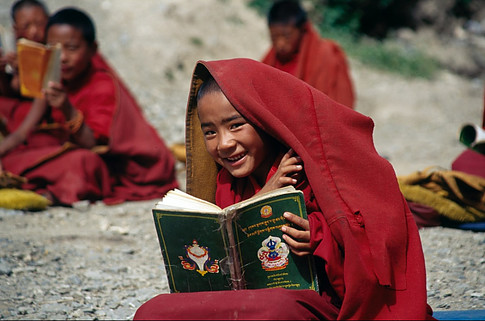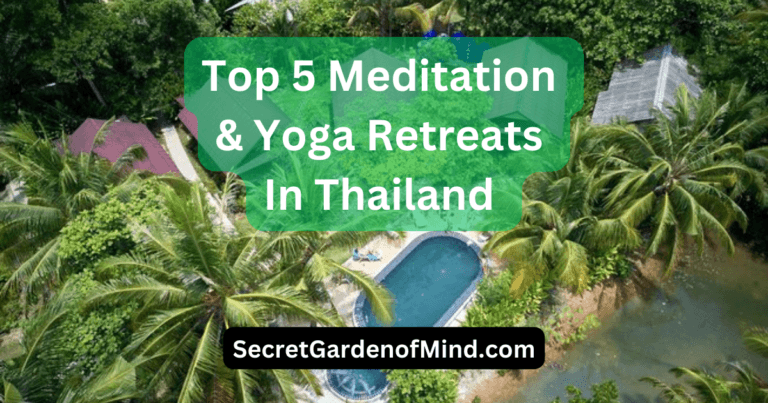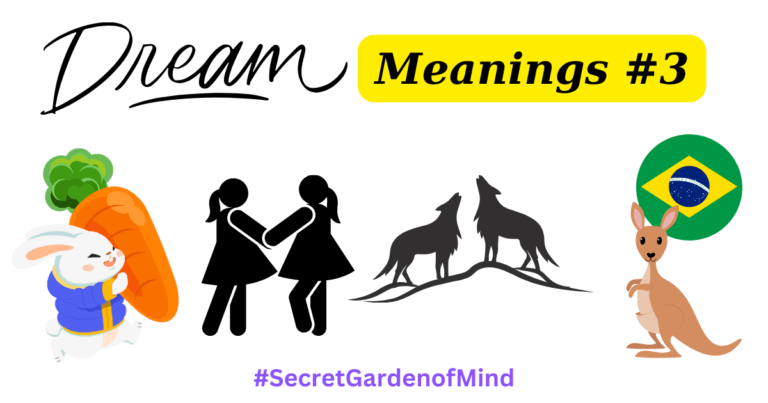The Sacred Rituals of Tibetan Buddhism for Inner Peace
Recently I have been very interested in the History and Culture of Tibet. Such stories Including; the elusive Yeti and the Secret Inner Earth Kingdom of Shambala have always fascinated me.
These Myths and Legends of the Himalayas… how else can I put it – they really are something else.
Indeed, the story of the Chimenti Stone was something that really caught my interest a couple of months ago now but not only THIS even The Sacred Rituals of Tibetan Monks for Inner Peace… I found this very interesting as well.
So, case and point, for today’s post I thought I would write about exactly this.
Being that this is a website dedicated to meditation, and unlocking the power of the mind – I definitely feel like this is a very relevant topic. No two ways about it, …
because anyone that knows about Tibetan culture, will know that up in the Himalayan Mountains exists several communities of Buddhist Monks. Men that regularly commit to meditation practices and sacred rituals to help them find inner peace. For a practice that has come to be known as Tibetan Buddhism or Vajrayana…
but… how this differs from traditional Buddhism is an interesting question.
Let’s start here.
The Sacred Rituals of Tibetan Monks for Inner Peace – Introduction
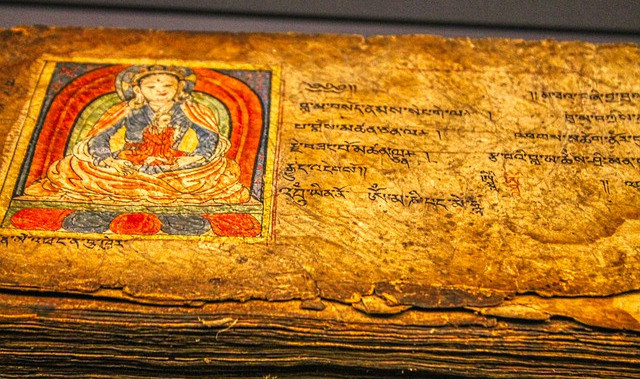
So, I was given a book by my mother recently, The Dalai Lama’s Book of Inner Peace By Harper Element Publishing. It was only a small book and it didn’t really take me long to read it all but anyhow it was very inspiring.
Now, I wouldn’t say that I want to convert to Buddhism or anything after reading this but I think I would actually love to visit Tibet. Especially to ride on the mountain train from Qinghai China to Lhasa (Tibet’s capital city).
However, since the Chinese Occupation that began in 1949 foreign visitors are no longer allowed into Tibet (unless accompanied by a tour guide). Unfortunately, this is just one of the many major changes to Tibetan life.
Now, even for the peaceful monks much has happened in their country and many unspeakable atrocities have affected this Himalayan land ever since. You would never expect the Tibetan people to cause a war but this is exactly what they have had to deal with – Their own people being cruelly murdered and their amazing monasteries bombed into the ground xx
You would think the Tibetan people would probably be the last people on Earth to start a war with another country but yet the Chinese have more or less just come along and taken over.
Now, when you consider that this is a land full of monks that sit around all day meditating this certainly is highly irregular. Except I guess what people don’t understand they fear.
Perhaps it is the monks with the real power and maybe the invaders of Tibet have attacked because they are scared of them.
Unknown abilities that border on the Supernatural perhaps… I don’t know.
I am kind of just speculating here but they do say that mediation can unlock the mind. The practice of opening the third eye and transcendence to above 5 sense reality maybe? Who really knows?
There definitely does seem to be something very mystic about Tibetan Buddhism, and whilst we are on the topic…
What is the Difference Between Tibetan Buddhism and Traditional Buddhism?
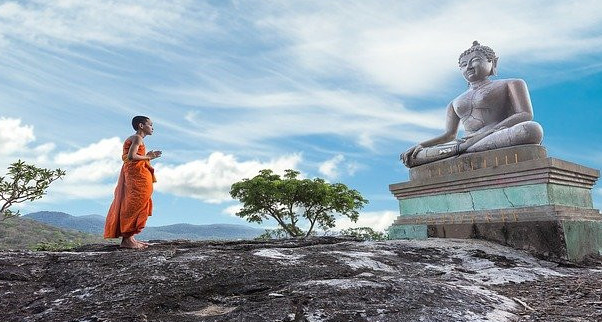
When it comes to differentiating between Tibetan Buddhism and mainstream Buddhist practices there are certain things to note. For instance in China what they require is that a practising Buddhist changes their lifestyle in order to become accepted as a true follower. Whilst in Tibet for their branch of Buddhism they only require the follower to change his or her perspective on life.
In principle, much of this is inherited largely from late Indian Buddhist traditions. This includes a strong emphasis on monasticism. Basically becoming a Monk! and in fact, it is well known that Tibet was once home to the largest Buddhist monasteries in the world. Something that sadly is no longer true.
So as well as this, Tibetan Buddhism includes a sophisticated scholastic philosophy, and this is followed by elaborate forms of tantric practice. The main focus is 3 core beliefs that are further expanded into different teachings.
These I will briefly discuss in the next section…
What are the 3 Main Beliefs of Tibetan Buddhism?
These include the Basic Teachings of Buddha which are core to the Buddhist way:
1.) The Three Universal Truths;
i.) Annica: Everything is constantly in a state of flux. Changing and evolving.
ii.) Dukkah: Impermanence causes us to suffer which makes life imperfect.
iii.) Anatta: There is no true self only a universal supermind.
2.) The Four Noble Truths of Vajrayana
i.) Birth is Suffering, Death Is Suffering, Getting Old is Suffering and Illness is Suffering.
ii.) Suffering comes from craving for continuation, craving for non-continuation and craving for sensual pleasures.
iii.) It is possible to stop suffering.
iv.) The truth will lead you to the end of your suffering…
3.) The Noble Eightfold Path
This is actually a further expansion of the fourth noble truth of Vajrayana, which can be split up into a further eight points.
- Holding the right views,
- Thinking the right thoughts,
- To refrain from speaking ill towards others.
- To refrain from actions that may harm others
- Not to embark on any livelihood that negatively impacts others
- To endeavour, and respond in the right way to unwelcome situations.
- To be mindful and to become one with nature in all its nothingness
- Being able to concentrate on meditation and finding Inner peace
So kind of similar to what I wrote in my old post about the 5 Precepts of Buddhism.
Seems like a lifetime ago since I wrote that but yes how good would the world be if everyone followed these teachings?
How the Chinese could ever have felt threatened by this is unbelievable but yes these are basically the 3 main beliefs that Tibetan Buddhism is based on.
However, some other important beliefs are;
- Reincarnation,
- Lamaism and
- The ‘3 M’s’ – (Mantras, Meditation and Mandalas).
I could write another post about just this but anyhow let’s continue…
What are the Four Schools of Tibetan Buddhism?
In the Tibetan Buddhist faith, there are 4 schools that denote different historical eras. These include;
- Nyingma (c. 8th century),
Buddhism was brought to Tibet in the 8th Century around 760 at the request of the Tibetan King Trisong Detsen.One of his first acts as king was to invite two Buddhist masters – Padmasambhava and Shantarakshita – over from the Indian subcontinent.
From here these men became the first teachers of the Buddhist texts translated into the newly created Tibetan language”.
- Kagyu (11th century),
Kagyu is the 2nd school of Tibetan Buddhism. It gets its name from the Tibetan བཀའ་བརྒྱུད། meaning “oral lineage” or “whispered transmission”.
The origins of Kagyu are attributed to Buddha Shakyamuni, it is better known for the specific practices of the Kagyu order by the great Indian yogi Tilopa (988-1069).
These practices were shared orally from one generation to the next. From teacher to disciple and this period lasted for around 60 years with the culmination of what came to be known as the “Five Founding Masters of Kagyu”.
1.) Tilopa (988-1069), an Indian yogi who experienced the original transmission of the Mahamudra.
2.) Naropa (1016–1100), an Indian scholar-yogi who perfected the methods of accelerated enlightenment described in his Six Yogas of Naropa.
3.) Marpa (1012–1097), the first Tibetan master. Best known for translating the Vajrayana and Mahamudra texts.
4.) Milarepa (1052–1135), the poet and the greatest yogi of Tibet who overcame Marpa’s reluctance to teach and attained enlightenment in a single lifetime.
5.) Gampopa (1079–1153), Milarepa’s most important student, who integrated Atisha’s Kadam teachings and Tilopa’s Mahamudra teaching to establish the Kagyu lineage.
- Sakya (1073)
- Gelug (or Gelugpa)(1409).
The Gelug or Gelugpa (དགེ་ལུགས་པ་) school is the newest and largest school of Tibetan Buddhism. Originally this school traces back to the teacher Je Tsongkhapa (1357–1419), who was one of the period’s foremost authorities of Tibetan Buddhism.
Tsongkhapa, who studied under Sakya, Kagyu, and Nyingma masters is the most renowned teacher of his time. He founded Ganden Monastery in 1409 and, though he emphasized a strong monastic sangha, he did not announce a new monastic order.
Following his death, his followers established the Gelug (“the virtuous tradition”) school. This also came to be known as “New Kadam” for its revival of the Kadam school founded by Atisha.
The Throne-Holder of Ganden (Ganden Tripa) is the official head of the Gelug school, a position that rotates between the heads of the two Gelug tantric colleges.
Of Its most influential figures is the Dalai Lama himself, who is traditionally a monk of the Gelug school, although as the spiritual and temporal leader of Tibet for over fifty years he has always represented all Tibetans.
Find more here: https://tnp.org/the-four-schools-of-tibetan-buddhism/
The Sakya school of Tibetan Buddhism dates back to the 11th century. The name Sakya comes from the Tibetan ས་སྐྱ་ meaning “pale earth” describing the grey landscape near Shigatse, Tibet where the Sakya Monastery – the first monastery of this tradition was built in 1073 as the seat of the Sakya School – .
From this The Sakya tradition was developed during the second period of translation of Buddhist scriptures from Sanskrit into Tibetan and was founded by Drogmi, the famous scholar and translator who had studied under Naropa and other great Indian masters.
The heart of the Sakya lineage teaching and practice is Lamdre, The Path and Its Fruit, a comprehensive and structured meditation path in Tibetan Vajrayana Buddhism.
“Sakya Trizin” (“the holder of the Sakya throne”), is the head of Sakya School who is always drawn from the male line of the Khön family.
This was previously a lifetime position that rotated between the Phuntsok Potrang and the Dolma Potrang, the two branches of that lineage.
His Holiness Ngawang Kunga Thekchen Palbar Samphel Ganggi Gyalpo, the previous head of the Sakya School, was born in Tsedong, Tibet in 1945 and served as Sakya Trizin from 1958 to 2017. It has now become a three-year position that rotates between the next generation of trained male offspring of those two families.
What Type of Buddhism is Practised in Tibet?
The main form of Buddhism practised in Tibet is Vajrayana Buddhism. This combines some of the essential teachings from Mahayana Buddhism with shamanic and tantric philosophies alongside the ancient Tibetan religion of Bon.
The basis of this type of Buddhism, also known as Diamond Vehicle Buddhism, includes special practices, meditations and rituals to accomplish the goals of cultivating compassion and the ultimate liberation of all living beings
The Nyingma Teachings Continued…
The first school of Tibetan Buddhism Nyingma and its teachings include a distinctive classification of Buddhist vehicles to liberation. These nine vehicles include;
The Sutra Vehicles;
- Shravaka
- Pratyekabuddha
- Bodhisattva
The Tantra Vehicles
- Kriya Tantra,
- Charya Tantra,
- Yoga Tantra
- Mahayoga Tanta,
- Anuyoga Tantra,
- Atiyoga Tantra
By going through the process of completion of each vehicle the final reward is said to be DZOGCHEN which I will discuss further below…
What is Mahamudra and Dzogchen?
One of the best known teachings within the Kagyu school of Tibetan Buddhism is “the great imprint or “the great seal” known as Mahāmudrā. This is also taught ithe Gelug and Sakya schools also practice mahāmudrā and refers to the fact that “all phenomena inevitably are stamped by the fact of wisdom and emptiness inseparable”.
Aside from Mahamudra, that can also be translated as man and woman, Dzogchen is a distinct method of direct introduction to the principle of śūnyatā. In the Nyingma school and the ancient Bon religious traditions these Combined togther make up what is called the “Great Perfection” (Dzogchen). Which collectively is known as the highest of all Buddhist teachings. It is a little confusing I know but this is basically the main qualification of Nyingma.
Where did Dzogchen Originate?
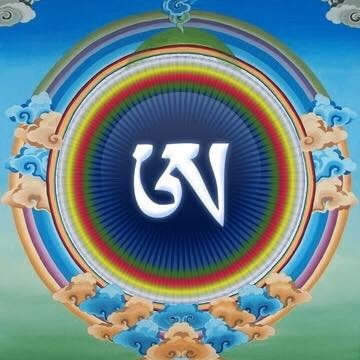
According to its own lineage histories, Dzogchen originated in India before coming to Tibet during the first wave of the transmission of Buddhism in the 8th and 9th centuries.
See Dudjom Rinpoche 1991 and Nyoshul Khenpo 2005 for translations of traditional historical material.
Is Dzogchen a Mahayana?
Also, the Dzogchen view is traditionally taught through extensive study of Mahayana, understanding emptiness and causation, and Vajrayana, transforming all appearances into a pure spiritual outlook.
If you would like to learn more about Dzogchen and its teachings check out this course by Lama Surya Das
DZGCHEN MEDITATION TRAINING
A Direct Path for Awakening to the Radiant Buddha Within
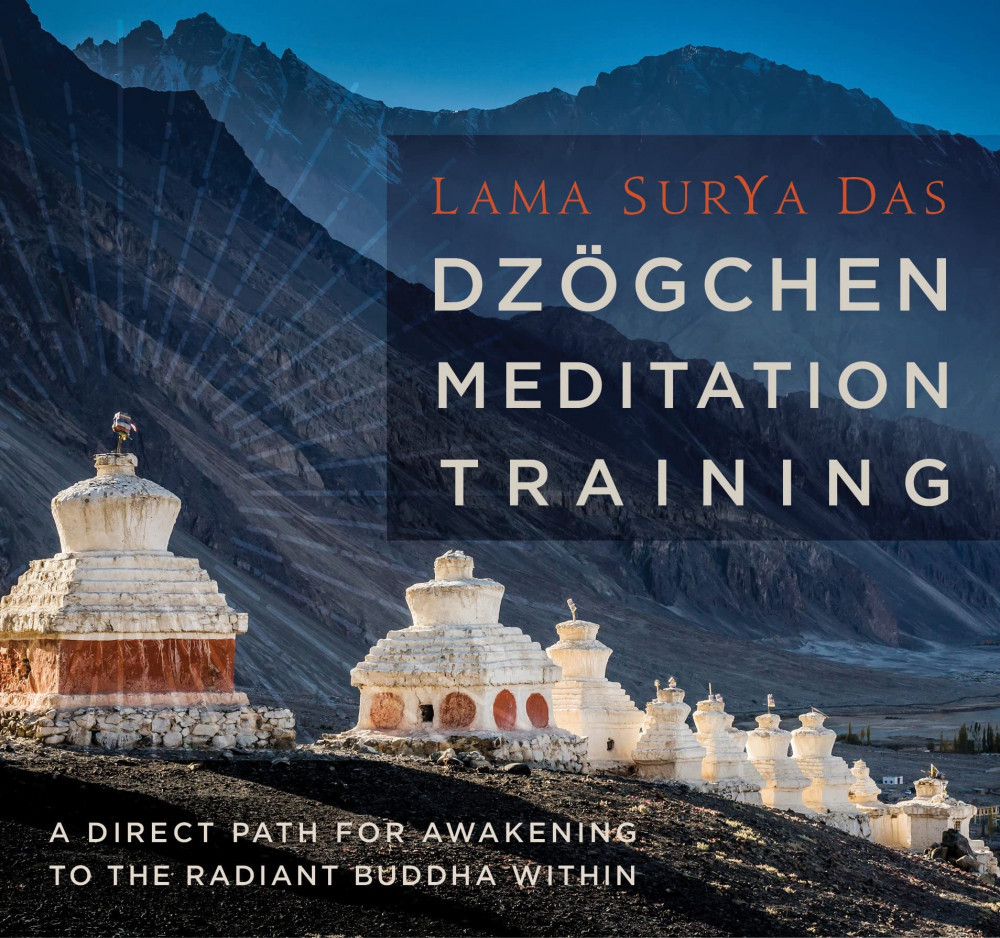
In Conclusion
Now, in hindsight The Sacred Rituals of Tibetan Buddhism for Inner Peace are quite complex. This I’m sure you may have gathered by just the few examples I have shared above. There are the 3 Main Beliefs, the three universal truths, the tree noble truths and the noble eightfold path. You then have the four schools of Tibetan Buddhism, the nine vehicles of Nginyma and then you have reincarnation, Lamaism and the 3 M’s Mantras, Meditation and Mandalas.
It’s pretty clear that these teachings have been very carefully developed over a very long period of time but what do you think? Does the Tibetan Buddhist faith represent the best values of a spiritual path? Can this help those seeking enlightenment and can the pathway to Dzogchen really help improve meditation?
Let us know your thoughts and feedback in the comments section below;
Your feedback is important!
Many thanks for stopping by = we value your readership and hope to see you all again…
Shining a light on your path to unlocking the human mind
Peace Out x
Alex B. Chivers
SecretGardenofMind.com

